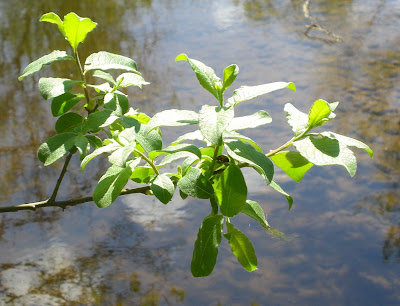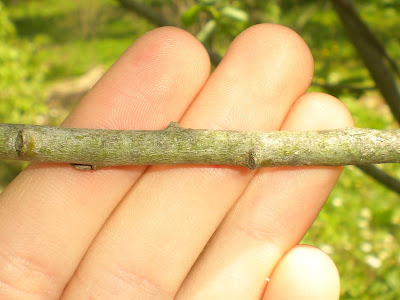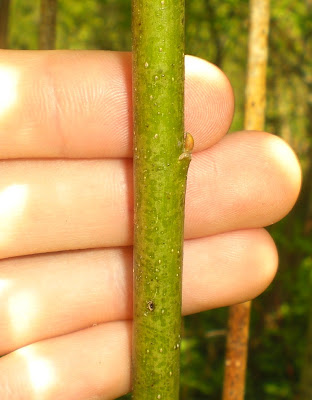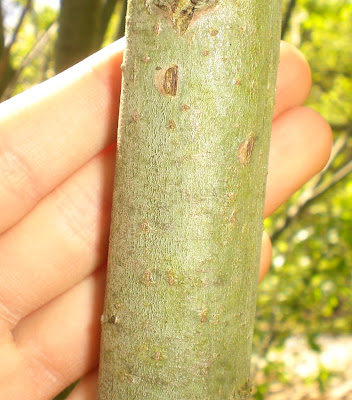The Pussy Willow (Salix discolor) has always been somewhat of a popular Willow in terms of landscaping and cultivation. The soft, fuzzy immature catkins which begin to emerge in late March have been long recognized as a sight to behold. Dried Pussy Willow twigs are often sold in bunches at many garden centres and florist shops.
 This species is indeed native to southern Ontario, and in some regions is particularly abundant! Pussy Willows are tall shrubs or small trees, and commonly have several trunks emerging from around a main stem. Unlike Sandbar Willow (Salix exigua), Pussy Willow does not spread and form colonies from underground roots. Like all other Willows, this tree does love to have its feet wet!
This species is indeed native to southern Ontario, and in some regions is particularly abundant! Pussy Willows are tall shrubs or small trees, and commonly have several trunks emerging from around a main stem. Unlike Sandbar Willow (Salix exigua), Pussy Willow does not spread and form colonies from underground roots. Like all other Willows, this tree does love to have its feet wet!
 Similar to the Beaked Willow (Salix bebbiana) this is another one of the broad leaved species of Willow. Beaked Willow leaves are smooth, while Pussy Willow leaves are downy and soft to the touch, as well as almost half the size of regular Beaked Willow leaves. The edges of Pussy Willow leaves are smooth or very finely toothed, while Beaked Willow leaves are always obviously serrated.
Similar to the Beaked Willow (Salix bebbiana) this is another one of the broad leaved species of Willow. Beaked Willow leaves are smooth, while Pussy Willow leaves are downy and soft to the touch, as well as almost half the size of regular Beaked Willow leaves. The edges of Pussy Willow leaves are smooth or very finely toothed, while Beaked Willow leaves are always obviously serrated.
 A cluster of Pussy Willow leaves. The upper surfaces are shiny, but they are indeed covered in tiny, soft hairs that gives the leaves, stems and young twigs a whitish appearance. Very luxurious!
A cluster of Pussy Willow leaves. The upper surfaces are shiny, but they are indeed covered in tiny, soft hairs that gives the leaves, stems and young twigs a whitish appearance. Very luxurious!
 The leaves can be somewhat narrower, but by most standards can still be considered broader than most other Willow species. The tip is blunt and pointed, and the base wedge shaped.
The leaves can be somewhat narrower, but by most standards can still be considered broader than most other Willow species. The tip is blunt and pointed, and the base wedge shaped.
 The leaf undersides are even paler in color and hairier! Note the smooth margins.
The leaf undersides are even paler in color and hairier! Note the smooth margins.
 Young twigs are smooth and grey.
Young twigs are smooth and grey.
 Suckers and fast growing stems are tinged green!
Suckers and fast growing stems are tinged green!
 Older bark is also smooth and grey.
Older bark is also smooth and grey.
 Near the bole of older trees, the trunk splits and forms these shallow cracked ridges. This is often only found on the central trunk of the tree which is the oldest.
Near the bole of older trees, the trunk splits and forms these shallow cracked ridges. This is often only found on the central trunk of the tree which is the oldest.
skip to main |
skip to sidebar
Welcome!
Thank you for visiting the site! This is an independently run, non-profit website focused on educating the public regarding the astounding beauty, biodiversity and overall importance of the many tree species found in the Carolinian Forest region of southern Ontario, Canada. Get out there and explore the forest!
